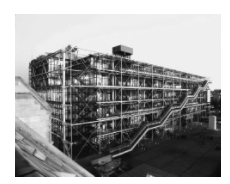On Halloween night, 2008, four hundred people gathered in the basement of the Pompidou Centre to listen to Keiji Haino, a Japanese artist wearing wraparound shades, make noise. Keiji screams into finely calibrated microphones, his voice the only instrument (although he will lay tracks, and loop one scream atop another). He also ululates, yodels, barks, grunts, hacks, howls, and growls; he goes on vocal runs in a falsetto that could caramelize a crème brûlée from thirty paces. And all of this is amplified to extraordinarily painful decibel levels.
Roughly half the crowd looked to be having fun; these masochistic cognoscenti didn’t laugh or walk out during the forty-five-minute set, certainly a sign of bravery if not actual interest. The most impressive among them even refused to stuff their fingers in their ears, or wad strips of the program into ragged earplugs, or wrap their heads guerilla-style with their cashmere scarves. Not only did they endure, without modulation, the tympanic abuse, they gave Keiji a standing ovation. The other roughly one-half fled.
This sort of audience stratification is typical in art museums that cultivate local audiences rather than exclusively catering to those in the know—an issue that the Pompidou Centre has faced from its inception. From the outset, the Pompidou Centre has represented an institutional response to the perceived problem of museum elitism. In the fall of 2008, under the guidance of director Jos Auzende, the Pompidou’s “in famous carousel” program (of which Keiji was a part) proposed to address once again the stratification of its audience by offering four evenings of “live art.” With musicians and musically minded performance artists appearing in four different venues, including three art museums, “in famous carousel” sought to reinvigorate the longtime mandate of the Pompidou Centre: to democratize culture.
Still, the act of democratization cannot come at the expense of the free will of its beneficiaries. Eight of eleven people seated near me quit, including a very classy man on my left who suffered not from “church giggles” but from a severe case of museum guffaws, the deeply amused, body-racking type of laughter that some kinds of cultural acts occasionally bestow upon a lucky viewer. I dug my index fingers deeper into my ears and squeezed my palms tightly to my head. Maybe searing aural pain democratizes us all.
*
French president Georges Pompidou himself proposed the building of the Pompidou Centre in 1969, and although he didn’t live to see its completion, his widow, Madame Pompidou, offered critical political assistance during the construction process. Once the call for architectural entries opened, 681 project proposals were submitted to the Pompidou Centre jury for consideration. The site was...
You have reached your article limit
Sign up for a digital subscription and continue reading all new issues, plus our entire archives, for just $1.50/month.
Already a subscriber? Sign in





